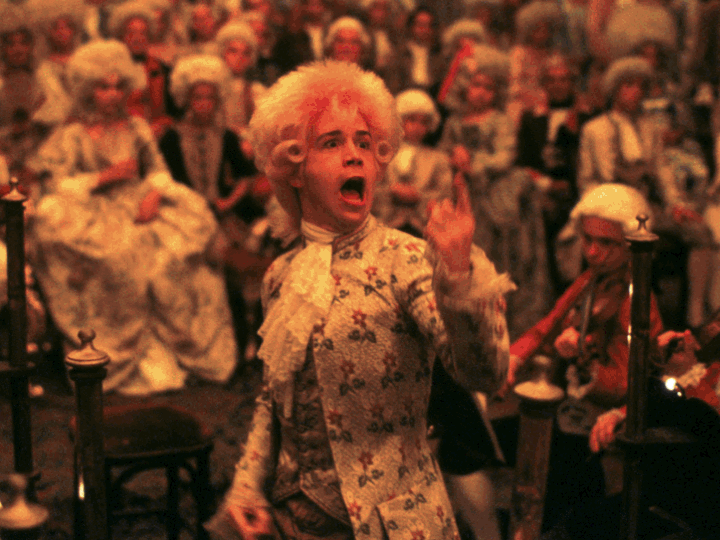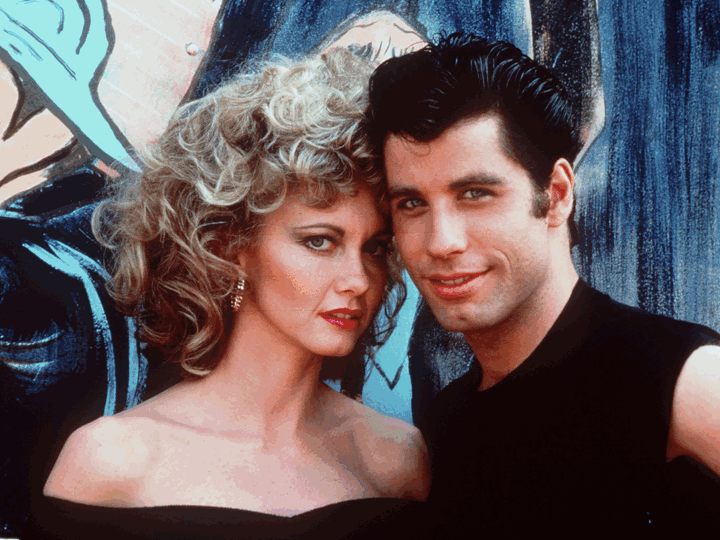Movie Buffs’ Feet Will Tap on August Date
- Share via
WASHINGTON — Here’s plenty of advance warning for you. On Aug. 28, cable’s Turner Classic Movies will show the following fabulous films, starting at 7:15 in the morning, Eastern time--4:15 a.m. on the West Coast:
First, “On Your Toes,” the rarely aired 1939 film version of a Rodgers & Hart Broadway musical classic. Unfortunately for audiences of then and now, virtually all the songs (including “There’s a Small Hotel”) were removed from the screen version, but one important sequence remains: “Slaughter on Tenth Avenue,” a wildly innovative ballet by George Balanchine.
Eddie Albert (many, many years later the star of TV’s “Green Acres”) stars in the picture and dances the lead in the ballet--or most of it. For close-ups of really difficult tap steps, a better dancer’s feet were edited in.
Next at 9 a.m. comes “Singin’ in the Rain,” a rollicking 1952 satire that critic Pauline Kael has called “probably the most enjoyable of all American movie musicals.” It includes, of course, the now-immortal title number sung under a torrent of studio showers by Gene Kelly.
This masterpiece is followed by more extremely entertaining musicals: “I Love Melvin” (1953), with a young Debbie Reynolds and versatile Donald O’Connor, both of whom almost stole “Singin’ in the Rain” from Kelly. Then “My Sister Eileen” (1955), with Janet Leigh, Betty Garrett and a young Bob Fosse in the funny saga of two sisters--one gorgeous, one plain--and their adventures in Greenwich Village.
We’re into the afternoon hours now and three endearing musicals starring the wonderful and criminally under-honored Doris Day: “By the Light of the Silvery Moon” (1953), one of two nostalgic musicals she made with Gordon MacRae; and “I’ll See You in My Dreams” (1951), a truly affecting musical biography of songwriter Gus Kahn (Danny Thomas) with Day as his unfailingly supportive wife.
Then--and by now it’s 6:30 p.m. (Eastern), Day stars in “It’s a Great Feeling,” a 1949 musical comedy that features cameo appearances by many stars then working on the Warner Bros. lot: Joan Crawford, Gary Cooper, Edward G. Robinson, Patricia Neal and more--plus Ronald Reagan and his then-wife Jane Wyman and even their chubby little daughter, Maureen.
As prime time arrives in the East at 8 p.m., one of the greatest films of all time leads off the evening: Charlie Chaplin’s 1936 epic “Modern Times,” a “silent” film in that it has almost no spoken dialogue, even though talkies had been around since 1927. There are sound effects, though, a background score written by Chaplin and a nonsense song performed by him in a shabby nightclub.
Audiences who flocked to see “Modern Times” in 1936 couldn’t have dreamed that in the modern times of 2000, the movie would be casually available every few months on television, and that much of the output of Hollywood’s golden age would be accessible day in and day out on cable networks like TCM and the less glittery American Movie Classics.
I, of course, will phone in sick on Aug. 28, or just stop answering the phone. And despite the super-stellar lineup, this isn’t even an extremely unusual day for TCM--not quite typical maybe, but every month there are days like this one, when movies of pure gold are lined up in a row.
Sad to say, the audiences for TCM tend to “skew old,” in industry lingo; mostly older people watch, though not necessarily people old enough to have been around when these fabulous movies were new.
Kids today are cinematically illiterate. They are fed a diet of junk movies and junk TV, and so maybe it’s not their fault they don’t know a movie classic from a clunker, or that they are bored by films made in black-and-white--a category that includes “Citizen Kane,” “From Here to Eternity,” “Sunset Blvd.” and “The Third Man,” each an invaluable gem.
Those of us who love these films don’t love them because we’re nostalgic, or because we long for the good old days (though we might). We love them and watch them and rewatch them because they are great, wonderful, masterfully made or just shrewdly designed to put you in a good mood, to make you very, very happy for two hours and a resonant period thereafter.
There are plenty of bad old movies. But a bad old movie is usually preferable to a bad new movie. Here’s why: A bad old movie tends to be corny, mawkish, silly, frivolous or just wacky. A bad new movie is likely to be vicious, violent, profane, obscene, nihilistic, pretentious, coldhearted and mean-spirited.
It really is as simple as that.
More to Read
Only good movies
Get the Indie Focus newsletter, Mark Olsen's weekly guide to the world of cinema.
You may occasionally receive promotional content from the Los Angeles Times.








